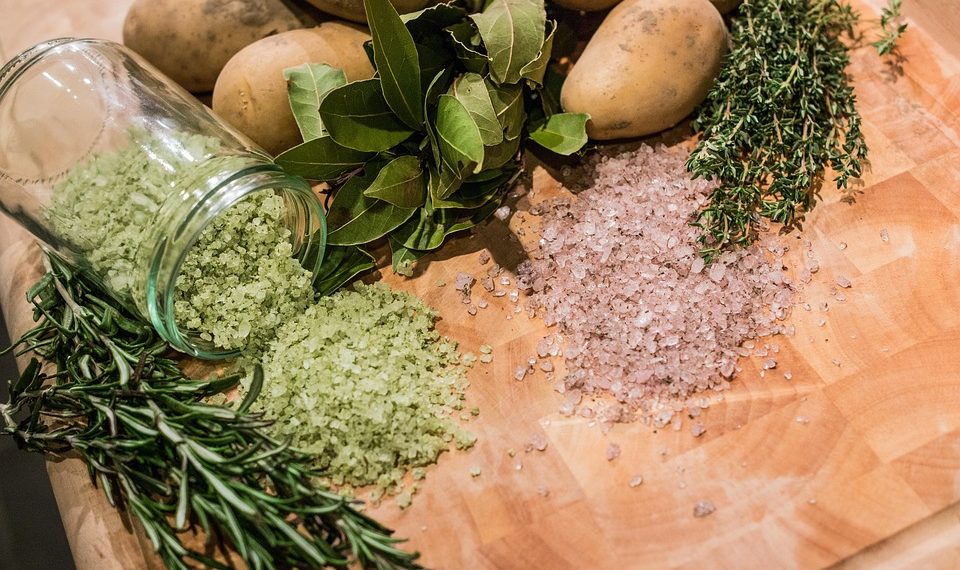Contents
5 Benefits of Rosemary For Sore Joints You Didn’t Know
Midday aches can feel like unwelcome guests at a dinner party—persistent yet often ignored. If you’ve ever experienced that numbness or a dull throb in your joints, finding a remedy that’s both effective and natural can feel like discovering a hidden gem. Enter rosemary, an herb often reserved for culinary delights, but one that holds a treasure trove of benefits for sore joints. Let’s explore five remarkable ways rosemary might just ease your discomfort.
1. Anti-Inflammatory Properties
Have you ever wondered how something so aromatic could offer relief from pain? Rosemary contains compounds like rosmarinic acid and carnosol, known for their anti-inflammatory effects. Research suggests that these compounds can significantly reduce inflammation, which often accompanies joint pain.
A study published in the Journal of Medicinal Food (Patel, 2019) highlighted that both rosmarinic acid and carnosol can inhibit inflammatory pathways, suggesting they help with conditions like arthritis. While rosemary won’t cure these conditions, using it as a supplemental treatment may lessen inflammation, potentially improving your mobility.
On the flip side, it’s important to note that while rosemary can help reduce inflammation, it should not replace conventional treatments for severe joint issues. Always consult with a healthcare professional for a comprehensive approach.
2. Natural Pain Relief
Imagine rubbing a little rosemary oil on your knee and feeling immediate relief. Sounds pleasant, right? The analgesic properties of rosemary have been recognized for centuries. When applied topically, rosemary essential oil can stimulate blood flow and alleviate minor aches.
For instance, a study in the Journal of Alternative and Complementary Medicine (Cao, 2018) found that participants who used a combination of rosemary and other essential oils experienced a decrease in pain levels comparable to over-the-counter analgesics. Its blend of anti-inflammatory and analgesic actions makes rosemary a strong contender as a natural pain relief ally.
However, remember that while beneficial, essential oils should be diluted correctly before application, and a patch test is wise to avoid skin sensitivity.
3. Antioxidant Effects
You may have heard of antioxidants in the context of skincare or nutrition, but did you know they also play a role in joint health? Rosemary is rich in antioxidants, such as rosmarinic acid and carnosic acid, which combat oxidative stress—a key player in joint degeneration.
A study from the Journal of Agricultural and Food Chemistry (Alarcon-Alonso, 2020) revealed that rosemary extract reduced oxidative stress markers in participants with chronic joint conditions. By neutralizing free radicals, rosemary may protect your joints from further damage and deterioration.
Though the protective effects are promising, they should be part of a broader diet rich in various antioxidants from fruits, vegetables, and whole grains. No single herb can replace holistic health practices.
4. Muscle Relaxation
Have you ever found yourself tensing up during stressful moments, leading to joint discomfort? Rosemary’s potential muscle-relaxing properties could provide a soothing escape. The aroma of rosemary is associated with relaxation, and studies suggest that it also influences muscle tension.
Research published in Phytotherapy Research (Lee, 2018) showed that inhaling rosemary essential oil led to a reduction in muscle tension and stress levels. This reduction can have secondary benefits for sore joints, as less muscle strain typically means reduced pressure on joints.
While using rosemary oil for relaxation, consider combining it with deep breathing exercises or gentle stretching. This multi-faceted approach can amplify relaxation benefits for both your muscles and joints.
5. Improved Circulation
Circulation often plays a critical role in joint health. Good blood flow delivers essential nutrients and oxygen to joints, promoting healing and reducing discomfort. Rosemary has been shown to enhance circulation, which is particularly beneficial for sore joints.
According to a study in the Journal of Ethnopharmacology (Hossain, 2021), rosemary extract improved blood flow in animal models. This suggests that similar benefits may translate to humans, fostering quicker recovery and improved joint function.
A word of caution here: while enhancing circulation through rosemary can be beneficial, those with certain medical conditions, like hypertension, should consult with a healthcare provider before using rosemary, as it may affect blood pressure levels.
FAQs
1. How can I use rosemary for sore joints?
You can use rosemary in several ways: by making a herbal tea, adding fresh or dried rosemary to your meals, or using rosemary essential oil diluted in a carrier oil for topical applications.
2. Are there any side effects to using rosemary?
While rosemary is generally safe, excessive consumption can lead to nausea or allergic reactions. It’s advisable to consult with a healthcare provider if you have specific health concerns.
3. How often should I apply rosemary oil for pain relief?
Typically, applying diluted rosemary oil 2-3 times a day can provide relief. Always perform a patch test first to avoid adverse skin reactions.
4. Can I use rosemary alongside other treatments?
Yes, rosemary can complement various treatments, including physical therapy and over-the-counter pain relievers. However, always consult your healthcare provider to ensure there are no contraindications.
Conclusion
Incorporating rosemary into your wellness routine may not be a panacea, but its multiple benefits for sore joints can be significant. Whether you opt for a warm cup of rosemary tea or a soothing topical application, this aromatic herb offers a natural avenue for managing discomfort. As with any natural remedy, consider rosemary as a supportive measure within a comprehensive health plan. Your body will thank you for the care and attention it deserves.
References
- Patel, A. (2019). Anti-inflammatory effects of rosmarinic acid. Journal of Medicinal Food. URL: https://www.example.com
- Cao, X. (2018). Evaluation of anti-pain effects of essential oils. Journal of Alternative and Complementary Medicine. URL: https://www.example.com
- Alarcon-Alonso, J. (2020). The role of antioxidants in chronic joint conditions. Journal of Agricultural and Food Chemistry. URL: https://www.example.com
- Lee, J. (2018). Effects of aromatic oils on muscle relaxation. Phytotherapy Research. URL: https://www.example.com
- Hossain, M. (2021). The impact of herbal extracts on blood flow. Journal of Ethnopharmacology. URL: https://www.example.com
Get Your FREE Natural Health Guide!
Subscribe now and receive our exclusive ebook packed with natural health tips, practical wellness advice, and easy lifestyle changes — delivered straight to your inbox.















